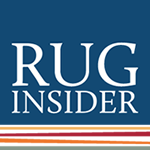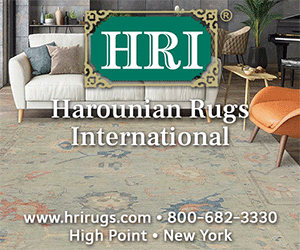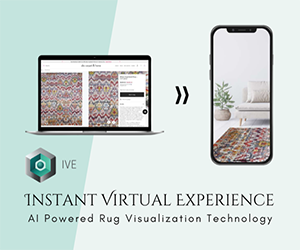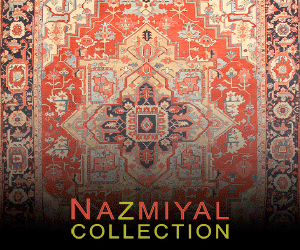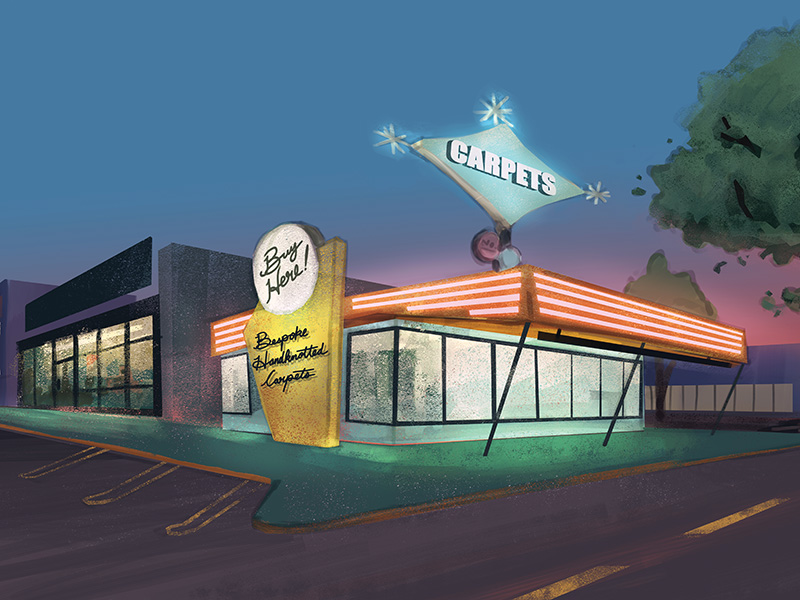Leveraging technology to reduce waste.
The use of rug samples has become a staple of rug and carpet showrooms the world over. They’re consumer friendly but horribly inefficient in terms of resource use. They also produce excessive waste, all the while making no-one money. “The Showroom of the Future” offers one possible solution.
Among the many tools in a wordsmith’s veritable toolbox, the interrogative is one always close at hand. Who? What? Where? And the like all offer an easy segue into the topic at hand. Oftentimes however, this is no mere literary trick, but rather the genuine impetus. This is how the concept of The Showroom of the Future was born; simply by asking, “How can we reduce our dependance upon wasteful sampling?”
Reducing wasteful sampling is a fundamental necessity owing to both the pending climate crisis and the relative financial health of the hand-knotted rug industry. It is also one with immediate, visible positive benefits. Most notably—fewer disused samples heading to the garbage bin once they are no longer required. The corollaries to this are even more impactful to any business: lowered costs and—ideally—increased sales with shorter lead times. Factoring in that no one, be they weavers, makers, importers, showrooms, or otherwise—except freight companies—makes money from the sample itself, the financial rewards of decreased expenditures become all that more appealing.
“But how?" I imagine you asking.
As a skeptic and realist myself I understand this reasoning all too well. After all, in the mid-oughts of the 21st century I was frequent-flying my way into First Class and innumerable showrooms across the United States and Canada promoting samples as the panacea which would solve all the inventory overhead problems associated with traditional hand-knotted rug retailing. Paired with extreme growth in customization brought about by the technologies of this era and "BAMM!" samples were—and remain—everywhere. But they also remain wasteful; once they are no longer required for the sales process they just sort of linger. Aside from possibly using one as a mat in front of a door or sink, there is little use for these diminutive representative works of art. It almost lessens the artistic appeal when said this way does it not? Especially when the maquette ends up in the trash.
Thus it is that one sunny afternoon while visiting with my colleagues and friends from Alternative Technology in Kathmandu, Nepal we asked the lede question: “How can we reduce wasteful sampling?” Notice we did not ask how to eliminate sampling as there is a tacit acknowledgement that some samples will still need to be made.
One solution already exists through computer rendered visualizations of carpet designs, and with each passing year these become more and more realistic, but they are still lifeless, flat, smooth representations of what is a highly-tactile three-dimensional product.
Salespeople and consumers alike don’t have the confidence in these renderings, and—to be blunt—they lack a depth of realism when printed on standard-sized office paper. The scale is just all wrong.
An immediate solution that any showroom owner or rug designer reading this could implement today is to show the visualization at 100% scale. This requires an HDTV of appreciable size and a commitment of time to calibrate the on-screen colors to the reference set of poms. After that, each visualization created can be shown on-screen with a high degree of realism and fidelity. This achieves the “look" but not the all-important “touch.”
And so I asked, "What if we project the design onto a plain colored sample?"
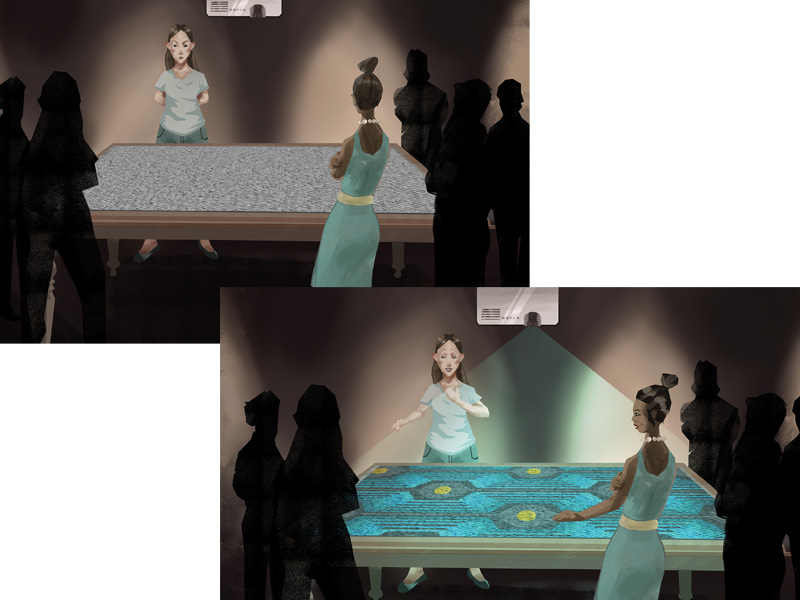
Envisage, if you will, the ability to project the rendering of a carpet design onto a plain colored sample for the client to touch and feel while simultaneously being able to adjust color combinations and layouts in realtime.
One year later and the video projector technology of today caught up with this idea and, due to this vanguard application of digital technology paired with ancient craft, the rug and carpet industry now has the ability to “create" a custom rug sample simply by projecting an image onto a plain colored sample. Whether used by rug designers behind-the-scenes or in the studio with clients, or in ways yet to be envisaged, I posit this development has the ability to transform a time and resource-wasting part of the sales process into one that is far more time and resource efficient, client-friendly, and profitable.
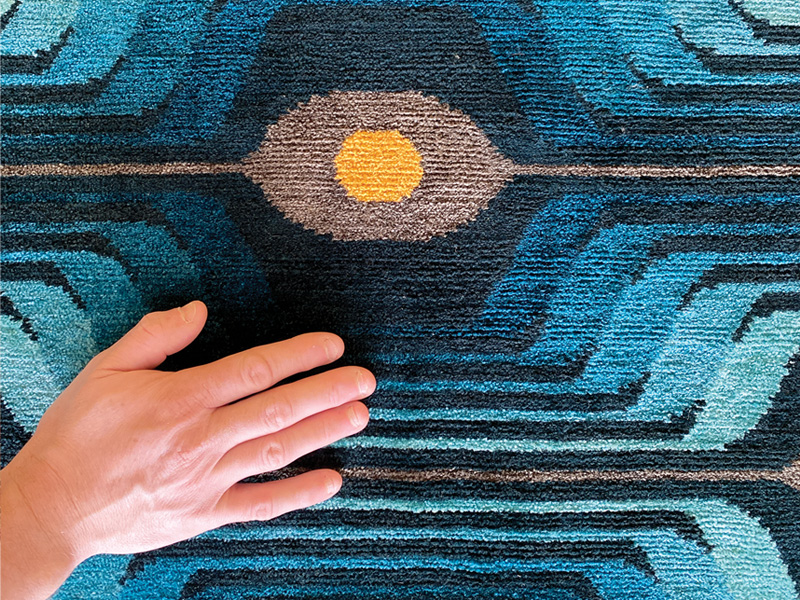
That was the original idea behind “The Showroom of the Future” presentation I gave during Domotex 2020, but it is not where the concept ends.
Much like “traditional,” the window that defines the future is constantly moving forward in time and as such we must always be adapting in order to remain relevant. As concern for the environment is likely to continue to gain in importance to consumers, smart rug traders would be wise to keep adapting the technology of the day to suit the needs of the rug and carpet showroom of today and—of course—the future.
alternative.com.np
theruggist.com
Illustrations by Zach Hayward, Photograph by Michael Christie.

